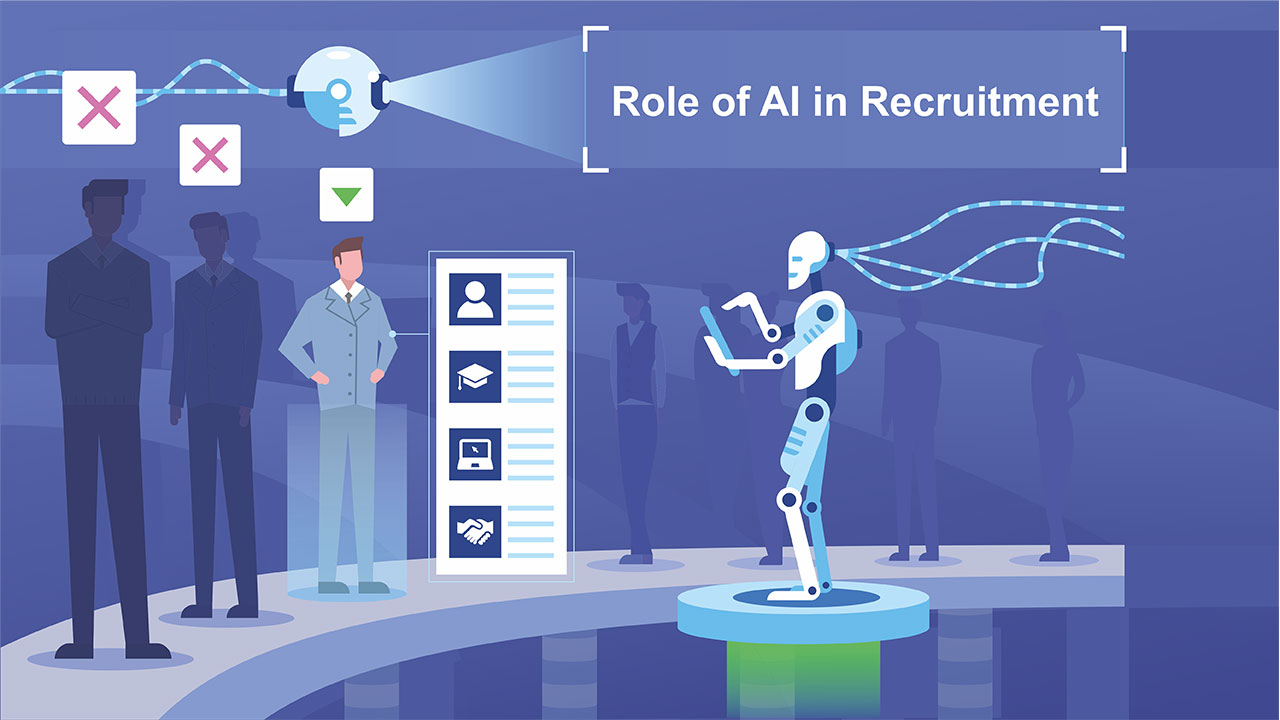7 Steps to Integrate AI into Recruitment Workflows

In today’s world, where AI is becoming increasingly prevalent, recruiting teams face the challenge of doing more with less: less budget and smaller teams. According to a survey by Josh Bersin Company and AMS, 58% of respondents said that increasing the efficiency of their talent acquisition (TA) team and reducing costs is a top priority for the coming year. While AI can boost efficiency and potentially lower costs, implementing it requires careful planning. Here’s a straightforward guide to integrating AI into your recruitment processes.
1. Identify Key Pain Points
Start by reviewing your current recruitment practices. Are your teams struggling with a shortage of candidates, high dropout rates, long hiring times, or cumbersome onboarding processes? Understanding where the main issues lie will help you determine where AI can make the most difference.
Keep in mind that AI isn’t always the answer. Sometimes, better processes or enhanced recruitment marketing might solve the problem without AI. The goal is to improve hiring efficiency, not just to implement AI.
2. Set Up an Experimentation Process
If you have tech-savvy team members who enjoy exploring new tools, set up regular sessions for experimenting with different AI technologies. Document what you learn from each tool to build a plan for piloting new solutions.
By starting with smaller, manageable investments that show measurable results, you can gradually expand your use of AI.
For example, the Recruiting Future podcast discusses how a large organization created a custom AI tool for hiring managers through a formal experimentation process.
3. Define Uses for Generative AI
Generative AI is just one type of AI tool available for recruitment. It can assist with tasks like creating job descriptions, drafting communications, and developing onboarding plans. However, the output from generative AI often needs editing to fit your company’s voice and tone.
Experiment with popular generative AI tools such as ChatGPT, Microsoft Copilot, Google Gemini, Perplexity, and Claude. Always review the legal terms before sharing sensitive company information.
SmartRecruiters offers secure AI tools for tasks like creating candidate scorecards and drafting communications.
4. Explore AI Vendors Carefully
With the explosion of AI companies, it’s crucial to evaluate the stability of the products and how vendors handle your and candidates’ data. Check if your current vendors offer AI-based tools and see what partnerships they have. For example, SmartRecruiters features over 30 vetted AI tools in their Partner Marketplace.
5. Seek Peer Validation
Learning from others who have successfully implemented AI in recruitment can be incredibly valuable. Attend conferences, join networking groups, participate in online events, and listen to relevant podcasts.
For instance, Ben Handyside from Colliers shares his experience with setting up guidelines for using ChatGPT in recruitment. After attending industry events, Allyn Bailey of SmartRecruiters noted the strong community spirit in sharing insights and solutions.
6. Work with Your Legal Team
In the U.S., hiring practices that seem biased can lead to legal issues. The EEOC prohibits discriminatory hiring practices, so it’s crucial that AI tools are compliant with these regulations. Keith Sonderling, an EEOC Commissioner, has discussed the potential biases of AI in recruitment in a Recruiting Future podcast episode.
A Korn Ferry survey found that 73% of leaders are closely monitoring their tech for security and bias issues. Collaborate with your legal team to ensure AI tools comply with local laws, such as New York City’s requirement for auditing automated employment tools.
7. Focus on Human Impact
Remember, hiring is about finding people who will thrive in your company culture. Over-relying on technology can make the process feel impersonal, which might turn candidates off.
Deloitte research shows that excessive use of AI can make employers seem less empathetic. Assess each AI-driven process to ensure it benefits candidates and hiring teams while aligning with your company’s values.
Balancing AI and Human Interaction
At SmartRecruiters, the goal is to humanize hiring in the age of automation. While technology can streamline tasks and enhance efficiency, over-reliance on AI can introduce biases and reduce human interaction. Lehua Stonebreaker from SmartRecruiters highlights the importance of maintaining a balance to avoid these pitfalls.
For a deeper dive into using AI to humanize hiring, check out SmartRecruiters’ “6 Do’s and Don’ts for Using AI to Humanize Hiring,” featuring insights from Chief Product Officer Rebecca Carr.
If you’re ready to explore an applicant tracking system with advanced AI features, like the one used by Frasers Group for efficient hiring, sign up for a demo today.






Leave a Comment